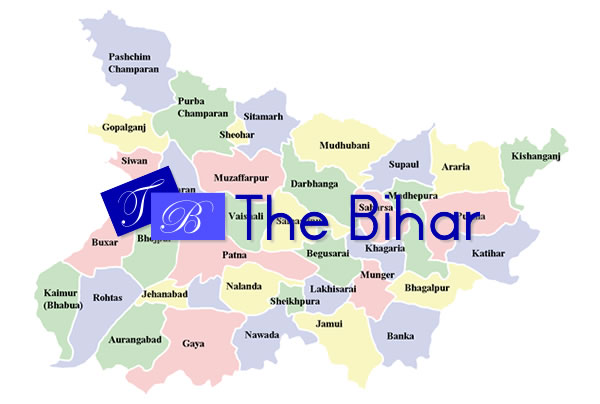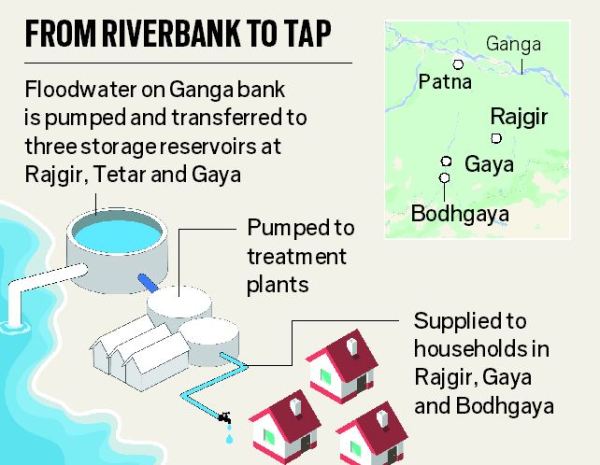Between The Faultlines: In Nitish backyard, a town sees its first Ram Navami rally, and a street battle
6 min readThere was forewarning. And based on it, the administration took decisions. Yet, when March 28 arrived, one narrow street in the town of Silao in Nalanda, the home district of Bihar Chief Minister Nitish Kumar, came under siege.
Members of a Ram Navami procession, police personnel and Muslims who live along this street, fought pitched battles. Stones flew in every direction, lathicharges followed and teargas shells were fired. Ninety minutes of clashes later, 20 people, including policemen, were injured. And strewn across were signs of premeditation and administrative failure.
More than a week later, Silao is still picking up the pieces. Senior officials in Nalanda told The Indian Express that in a district not new to communal tension, the guard was up ever since March 26 when an estimated 25,000 people participated in a Ram Navami procession in the heart of Bihar Sharif, the district headquarters. “Processions like these, organised by the Bajrang Dal, are fairly new to Bihar Sharif. Ram Navami has always been celebrated, but a procession such as this started only in 2017. Last year, there were a few thousands, but this year there were at least 25,000 people. It was tense, with many in the crowd brandishing swords. That day, the rally was allowed only on what is called Sadbhavna Path, and not in residential areas. The day passed peacefully,” a senior district official said.
“When permission was sought for the Ram Navami processions, they were sought for different days. It wasn’t as if the organisers wanted all processions held on Ram Navami, or the 26th itself. For instance, they wanted to conduct it in Bihar Sharif on the 26th, and in Silao on the 28th which would be the first in that town. That indicated to us that the same people who held the procession on the 26th would collect in Silao two days later. These were not local-only processions,” a senior police officer said.
Then followed the argument over the procession route. In their written application for permission, the route sought was not just for Silao Bazaar, but for Kadhagali as well, a residential area on the outskirts of Silao which has a predominantly Muslim population. Nalanda District Magistrate Thiyagarajan S M rejected the plan and asked it be restricted to the main Silao Bazaar, on the lines of the procession in Bihar Sharif.
But ground inputs suggested that the Bajrang Dal was bent upon taking the procession through Kadhagali. So senior officials, including the DM and SP, travelled to Silao on March 27. They called a peace meeting at the Silao police station, a kilometre away from Kadhagali. Present at the meeting were traders, leaders of the local Bajrang Dal, as well as Muslim leaders.
A Hindu trader, who did not wish to be named, said there were around 50 people at the peace meeting. “Things got heated. The locals kept quiet and didn’t want trouble. But the Bajrang Dal leaders insisted that the rally go through the lane. They said it was their democratic right to collect anywhere. The Muslims argued that such a procession had never been taken out before, and insisting on taking it through that street would stoke trouble. The district administration was also being careful. It stuck to its stance that the procession would not be allowed lest there is a law and order problem,” the trader said.
At one point, the organisers said there was a Shiva temple right in the heart of Kadhagali, and they wanted holy items from the temple to be retrieved and included in the procession. “This put us in a spot. If we denied them this, it could have led to more anger, and we would be accused of interfering in faith,” a senior official said. Finally, a compromise was reached: 10 Hindus and 10 Muslims would enter the lane, visit the temple, and then join the procession in the main bazaar.
Kadhagali is only a few feet wide and densely populated — its width allows the passage of only one vehicle at a time. At one of the lane is the Silao market. A kilometre later, the lane opens out to railway tracks adjacent to a mosque. At 11 am on March 28, policemen showed up at Kadhagali. Senior officers too were at the spot.
For a while, things went according to plan. The 20 designated people, their names already on a sheet of paper, went to the temple and exited the street. Mohammad Ilyas, a daily wage labourer who lives there, said, “Contrary to what was agreed upon the previous day, people kept collecting on both sides of the street and insisted that the procession be allowed through it. We were in our homes and could sense the atmosphere turning hostile. To appease the crowd, police officers first allowed a hundred women to pass through. That went off peacefully. But as soon as that happened, more and more men showed up at both ends, demanding they be let in. They had swords and were shouting slogans.”
By 11.45 am, there was a problem. The district administration and police appealed for calm, letting small batches through, but the crowd collected at one end, near the railway tracks. From only twenty who were meant to be near Kadhagali, there were now over a thousand. Altaf Khan, another resident, said, “In a small town like Silao, everybody knows each other. But most were people I had never seen before, and had come from outside.”
Some of the Muslims placed planks to restrict entry to the street, but this only made the crowd more restless. A train, the Shramjeevi Express, was even stopped for 15 minutes. All of a sudden, stones began to be hurled. The police reacted with force, with a lathicharge and tear gas shells. “This went on for an hour and half, but it felt like a lifetime,” a Muslim resident said.
District officials took the stand that the clash couldn’t be called “communal” because it was primarily a clash between police and those in the procession. But Anandi Prasad, senior VHP and Bajrang Dal functionary, claimed that the first stones were thrown by Muslims. “They were the first to throw stones. All we said was that this is a public road. Why should we not be allowed to pass through?”
Prasad said that both processions in Bihar Sharif and Silao were taken out by the Bajrang Dal. “Yes, it was the Bajrang Dal that took out both processions. Hum hi to karayenge. But why would we want violence when we know it will put Hindus at risk. Did something happen in Bihar Sharif? Yet the administration is only targeting the Bajrang Dal. Ek tarfa karyavahi ho rahi hai (the action being taken is one-sided),” he said.
Over 35 people have been arrested, among them two Bajrang Dal functionaries — Zila Sanyojak Dhiraj Kumar and Nagar Sanyojak Kundan Kumar. Two Muslims, who were said to have placed the wooden planks to block the street, have also been held. Prasad said, “Look at these skewed numbers. Some of our people were arrested when they wanted to meet BJP leaders.”
Reached for comment, District Magistrate Thiyagarajan S M said: “We have identified the culprits and are in the process of arresting them. They will be held and a strong case will be made for their prosecution. As an act of administrative goodwill, we have met traders who were apprehensive about innocents being picked up and assured them that will not happen. There were at least three videographers present. We are looking at police call detail records, and all investigation will happen on evidence. Shops opened in the bazaar on Tuesday. There is no tolerance to these kind of events.”
Courtesy: Indian Express


